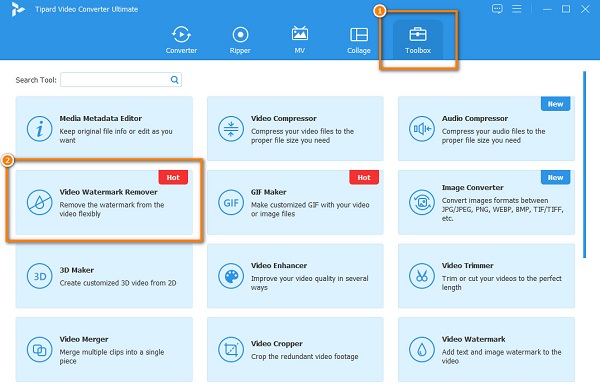Ever wondered why those big, bold watermarks are slapped across Shutterstock images? Well, they serve a pretty important role in the world of stock photography. Basically, a watermark is like a digital signature or a protective barrier placed over an image to prevent unauthorized use. They’re usually semi-transparent text or logos that cover key parts of the photo, making it clear that the image is copyrighted and not free to use without proper licensing.
Shutterstock and other stock photo sites use watermarks for a few key reasons:
- Protection Against Unauthorized Use: Watermarks deter people from downloading and using images without paying for them.
- Preview and Selection: They allow potential buyers to see what the image looks like and decide if they want to purchase it.
- Brand Identity: The watermark often includes the Shutterstock logo, reinforcing the brand and its rights over the image.
It’s important to remember that these watermarks are there to protect the photographer’s and Shutterstock’s rights. They make it clear that the image is copyrighted and that you need to purchase a license to use a clean, watermark-free version legally.
Removing a watermark without permission is not just a technical challenge but also a violation of copyright law. So, understanding the purpose of watermarks helps us appreciate why they’re there and why removing them without authorization can lead to legal trouble.
Legal Considerations When Removing Watermarks from Photos

Let’s get real—removing watermarks from Shutterstock images without proper authorization is a big no-go legally. Watermarks are a clear sign that the image is protected by copyright law, and tampering with them can lead to serious consequences.
Here’s what you need to know about the legal side of things:
- Copyright Infringement: Removing a watermark and using the image without purchasing a license is considered copyright infringement. This can result in fines, lawsuits, and damage to your reputation.
- Intellectual Property Rights: Photographers and Shutterstock own the rights to their images. Disregarding their rights by removing watermarks is a violation of intellectual property law.
- License Agreements: When you buy a license from Shutterstock, you get legal permission to use the image without watermarks. Using the image outside those terms, or removing the watermark before purchasing, is illegal.
- Risks of Illegal Removal: Many methods claiming to remove watermarks—like editing software or online tools—can be unreliable or illegal. They often lead to legal action if used improperly.
The best way to stay on the right side of the law is to always purchase the appropriate license before using an image. If you’re ever unsure, consult the licensing agreement or seek legal advice. Remember, respecting creators’ rights helps support their work and keeps the creative economy healthy.
In summary, removing watermarks without permission isn’t just unethical—it’s illegal. Play it safe by respecting copyright laws and Shutterstock’s licensing terms. That way, you can enjoy high-quality images without risking legal trouble.
Methods to Remove Watermarks from Shutterstock Images
When it comes to removing watermarks from Shutterstock images, there are several methods people often consider. However, it’s crucial to remember that most of these methods are either legally questionable or can compromise the quality of the image. Let’s explore some common approaches:
- Cropping the Image: If the watermark is located on the edge of the photo, cropping it out might be the simplest solution. This is quick and doesn’t involve complex editing, but it can also cut out important parts of the image, which might not be ideal.
- Cloning and Healing Tools: Many photo editing apps offer clone or healing tools that let you paint over the watermark with surrounding pixels. This method requires some skill and patience to make it look seamless.
- Content-Aware Fill: Some advanced editing software includes content-aware fill features that automatically analyze the area around the watermark and fill it in. This can produce good results but still requires tweaking and expertise.
While these methods might seem tempting, it’s important to emphasize that removing watermarks without permission is often against copyright laws. If you want a high-quality, watermark-free image legally, the best route is to purchase the image properly or seek alternatives that are licensed for your intended use.
Using Photo Editing Software to Remove Watermarks
Photo editing software can be powerful tools for removing watermarks, but they need to be used responsibly. Here’s a look at some popular options and how they can help you achieve a clean image:
| Software | Features | Ease of Use |
|---|---|---|
| Adobe Photoshop |
|
Intermediate to Advanced |
| GIMP (GNU Image Manipulation Program) |
|
Intermediate |
| Pixlr |
|
Beginner to Intermediate |
Using these tools effectively involves zooming in on the watermark, carefully selecting the area, and blending it with the surrounding pixels. For example, with Photoshop’s Content-Aware Fill, you can select the watermark, activate the fill, and let the software do the heavy lifting. Afterwards, you might need to do some touch-ups to ensure everything looks natural.
Remember, while these techniques can produce impressive results, they require practice and patience. Moreover, always prioritize legal and ethical considerations. If you have the rights to the image, removing a watermark for personal use or editing is usually fine. Otherwise, it’s best to obtain a legitimate, watermark-free version through licensing or purchasing the image.
Tips for Finding Licensed Images Without Watermarks
Looking for high-quality images without those pesky watermarks? It might seem tricky at first, but with a few smart strategies, you can find the perfect licensed photos legally and easily. Here are some tips to guide your search:
- Use Reputable Stock Photo Websites: Platforms like Unsplash, Pexels, and Pixabay offer a vast library of free, high-resolution images that are licensed for personal and commercial use. These sites generally don’t watermark their images, so you get clean photos right off the bat.
- Check Licensing Details Carefully: Always read the licensing terms before downloading. Some free sites require attribution, while others don’t. Understanding the license helps you avoid accidental copyright infringement.
- Explore Paid Stock Photo Services: If you need exclusive or premium-quality images, consider paid services like Adobe Stock, Shutterstock (with a subscription), or iStock. These platforms provide images without watermarks once purchased or licensed properly.
- Use Search Filters: When searching on stock sites, utilize filters for “licensed” or “royalty-free” images. This narrows down your results to images that are ready to use legally without watermarks or restrictions.
- Leverage Creative Commons Licenses: Websites like Flickr or Wikimedia Commons host images under Creative Commons licenses. Make sure to verify the specific license type—some require attribution, while others are free for commercial use.
- Bookmark Trusted Resources: Keep a list of reliable sites that offer licensed, watermark-free images. This saves you time and helps ensure you’re always working with legal content.
By following these tips, you’ll be able to find stunning images that are legally safe to use—no watermark removal needed! Remember, the key is to always respect licensing terms, so you stay on the right side of copyright laws while enhancing your projects with beautiful visuals.
Final Thoughts on Respecting Copyright and Using Images Properly
In the world of digital media, images are a powerful way to communicate, inform, and inspire. But with that power comes responsibility. Respecting copyright and licensing agreements isn’t just about avoiding legal trouble—it’s about honoring the hard work of photographers, designers, and artists who create these visuals.
Here are some final thoughts to keep in mind:
- Always Use Licensed or Your Own Images: Whenever possible, use images that you have created yourself or have obtained through proper licensing channels. This ensures you’re compliant with copyright laws and supports content creators.
- Avoid Unauthorized Watermark Removal: Removing watermarks without permission is considered copyright infringement and can lead to legal consequences. Instead, seek legal alternatives like licensed images or free resources.
- Understand Licensing Types: Different images come with different licenses—some allow free use, others require attribution, and some restrict commercial use. Familiarize yourself with these terms to avoid unintentional violations.
- Respect Creative Rights: Giving credit when due not only complies with licensing terms but also shows appreciation for creators’ work. When in doubt, attribute the source appropriately.
- Educate Yourself and Your Team: Make sure everyone involved in your projects understands the importance of copyright laws and proper image use. A little knowledge can prevent costly mistakes.
Ultimately, using images responsibly is about balancing your creative needs with respect for intellectual property. By choosing licensed images and following best practices, you can create compelling visual content without risking legal issues or undermining the hard work of creators. Remember—good ethics in image usage build trust and credibility, both for your brand and your personal projects.


